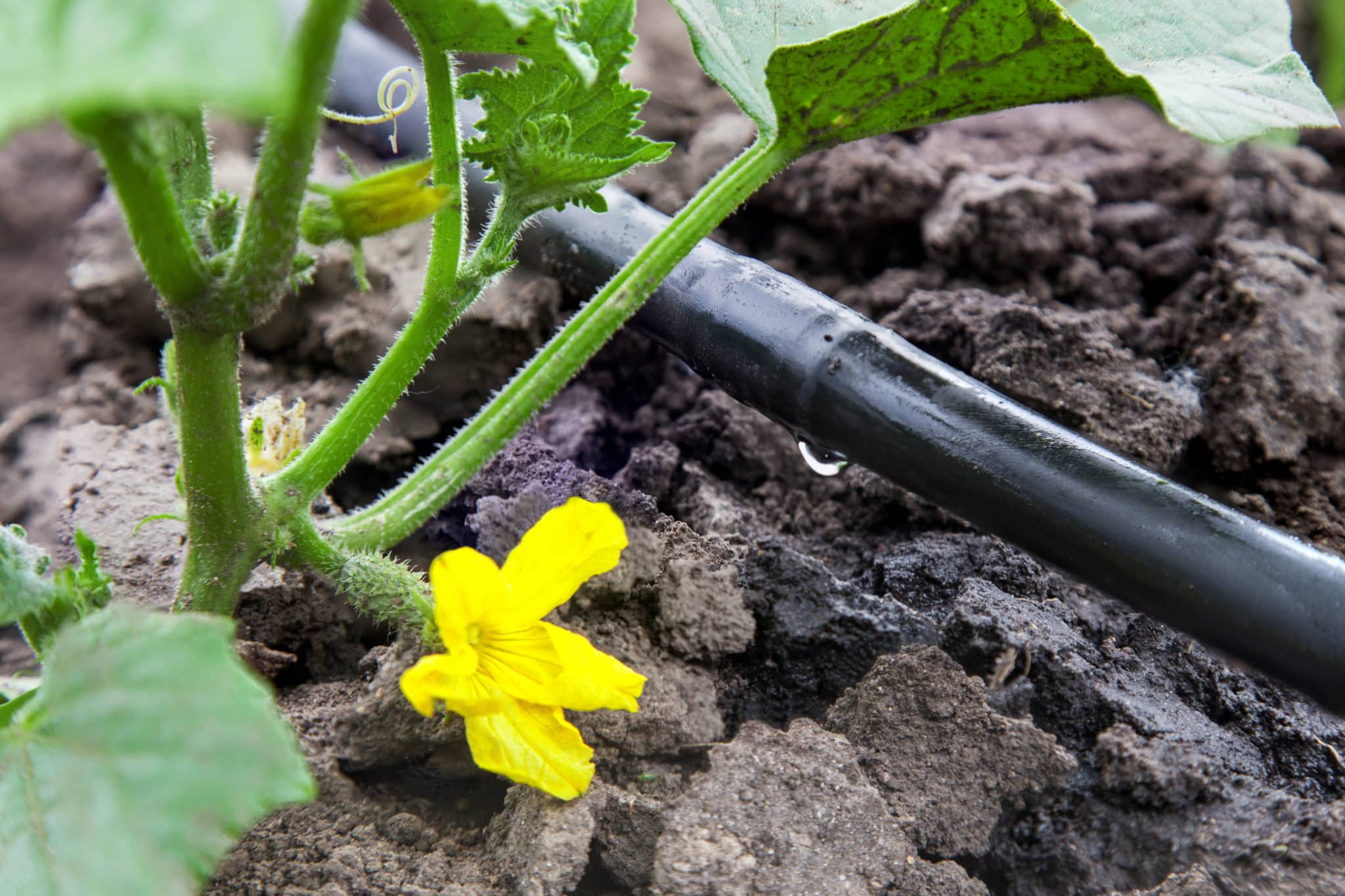A drip irrigation system is one of the best ways to ensure the growth of healthy plants and trees. And besides the convenience factor, innovative water management tools like this are great for your plants, the environment, and your water bill.
Drip irrigation is ideal for almost every landscape, and if you’re always traveling, it’s the perfect tool to keep your plants watered while away. But what is a drip irrigation system, and why install one? Better yet, how do you choose one that’s perfect for your watering needs?
Read on to find out all you need to know about how to pick the perfect drip irrigation system for you.
What Exactly Is a Drip Irrigation System?
A drip irrigation system is a low-pressure, low-volume watering system that delivers water to plants through drip action. The main advantage is that it keeps the roots moist while using less water than other kinds of irrigation systems.
You can keep the system as inconspicuous or obvious as you want it to be, as long as the parts that emit water stay above the soil and mulch to prevent clogging.
There are several benefits and reasons to use a drip irrigation system for your garden, including:
- Flexibility as plants grow
- Lower water use compared to traditional sprinkler systems due to reduced evaporation
- Connection directly to the house spigot rather than into your home’s water line
- Gentle and precise watering that minimizes water runoff and erosion
- Supply lines that go on the ground or under mulch without the need to dig underground
- Exact delivery to where water is needed and not to random places where weeds can crop up
Buying the Right Drip Irrigation System Components
When it comes to designing a customized drip irrigation system, you can either buy an entire kit or purchase components separately.
But whichever way you go, you’ll probably need to consider additional fittings and connectors to make your drip irrigation system work perfectly for your outdoor setup. Extra components you may need to consider include:
- Basic drip emitters
- Shutoff valves
- Anti-siphon valves
- Goof plugs
- Cross connectors
- Quick connectors
- Fertilizer dispensers
- Tee connectors
- Filters
And if you’re buying the components separately, make sure you buy components from the same manufacturer if possible as this will guarantee compatibility through your entire system.
Here are a few of the key components that you’ll need to consider when assembling your own drip irrigation system:
Drip Lines Are the Key Component to Any Drip Irrigation System
Drip lines form the central part of any drip irrigation system. These are hoses with tiny holes along their length that let water drip out.
Drip lines also hold the drip emitters that water your plants. Drip emitters look like thin tubes that come out of your drip line. These tubes help the water go deep into the ground exactly where you need watering. Fortunately, they are available in different designs for different uses such as:
- Basic drip emitters for targeted watering (2–4 liters per hour)
- Misting nozzles for plants that prefer mist
- Micro-sprinkler heads for vegetables and flower beds
Keep Water From Flowing Backwards With the Orbit Anti-Siphon Valve
Anti-siphon devices or backflow preventers keep water from flowing back into your supply when the system is on. This is important because backflow can contaminate your drinking water.
When choosing an anti-siphon valve, you’ll want to consider the following:
- Size
- Water flow
- Maximum water pressure connectivity
- Compatibility
The Orbit Anti-Siphon Valve comes in a green color that blends in with growing plants. At a size of three-quarters of an inch, it allows water to flow freely at a rate of 8 gallons per minute (GPM) from the house water line to the sprinkler system and keeps it from flowing backward. Another advantage is that it’s compatible with most systems and you can adjust the water pressure.
Senninger PSRTM 2 Regulates Water Pressure
A pressure regulator reduces the home water pressure and makes it compatible with the drip system. Without this device, your home’s water supply would have too much pressure for the drip irrigation system and could lead to leaking or to fittings popping off.
A 25 PSI (pounds per square inch of pressure) regulator is sufficient for most drip irrigation systems but double check your system’s pressure requirements before buying a pressure regulator.
Rain Bird makes a 25 PSI water pressure regulator that’s affordable and easy to install. Rain Bird also has a range of different regulators with a higher PSI should your garden need it.
Take a Shortcut With a Drip Irrigation Kit
Kits combine all the components you need for a particular type of drip irrigation system. Some allow for expansion as your plants grow while others come with spare parts for future repairs.
Below are three ideal kits you can consider for different applications.
A Garden Bed Irrigation Kit From DripWorks Is Ideal if You Have Raised Beds in Your Garden
If you’ve taken advantage of garden beds in your garden, you should consider a Garden Bed Irrigation Kit from DripWorks. This kit comes with a host of parts, including:
- A pressure regulator
- Drip lines
- Elbow fittings
- Goof plugs
You can also choose to add a timer to your kit if you need one.
Drip Works also provides handy installation videos on their website so it feels like you have an expert guiding you through how to get your drip irrigation system up and running.
Pathonor Drip Irrigation Kit Is Easy to Build & Install
The Pathonor Drip Irrigation Kit comes with everything you’d need, including:
- Blank distribution tubing
- Barbed fittings
- Tap faucets
- Misters nozzles
- Support stakes
This drip irrigation kit is easy to install and can save up to 70% of water compared to conventional watering.
Rain Bird Drip Repair & Expansion Kit Has Solutions for Every Garden
The Rain Bird Drip Repair and Expansion Kit comes with a parts organizer tray filled with 112 universal drip irrigation devices like:
- Emitters
- Couplings
- Stakes
- Tees
- Plugs
- Faucet adapters
You also get a troubleshooting guide that provides maintenance tips, suggestions on where common problems may occur, and possible solutions.
Focus on Creating a Drip Irrigation System That’s Ideal for Your Garden
Now that you know the different components that make up a drip irrigation system, you can focus on designing and building one that suits your needs. The ideal system should align with your garden size, soil type, and plants.
You will need to clean and maintain your system a few times a month to keep it running its best, but most drip irrigation systems are hassle-free and much less work than traditional watering methods. You’ll know it’s working as your garden starts to flourish.






